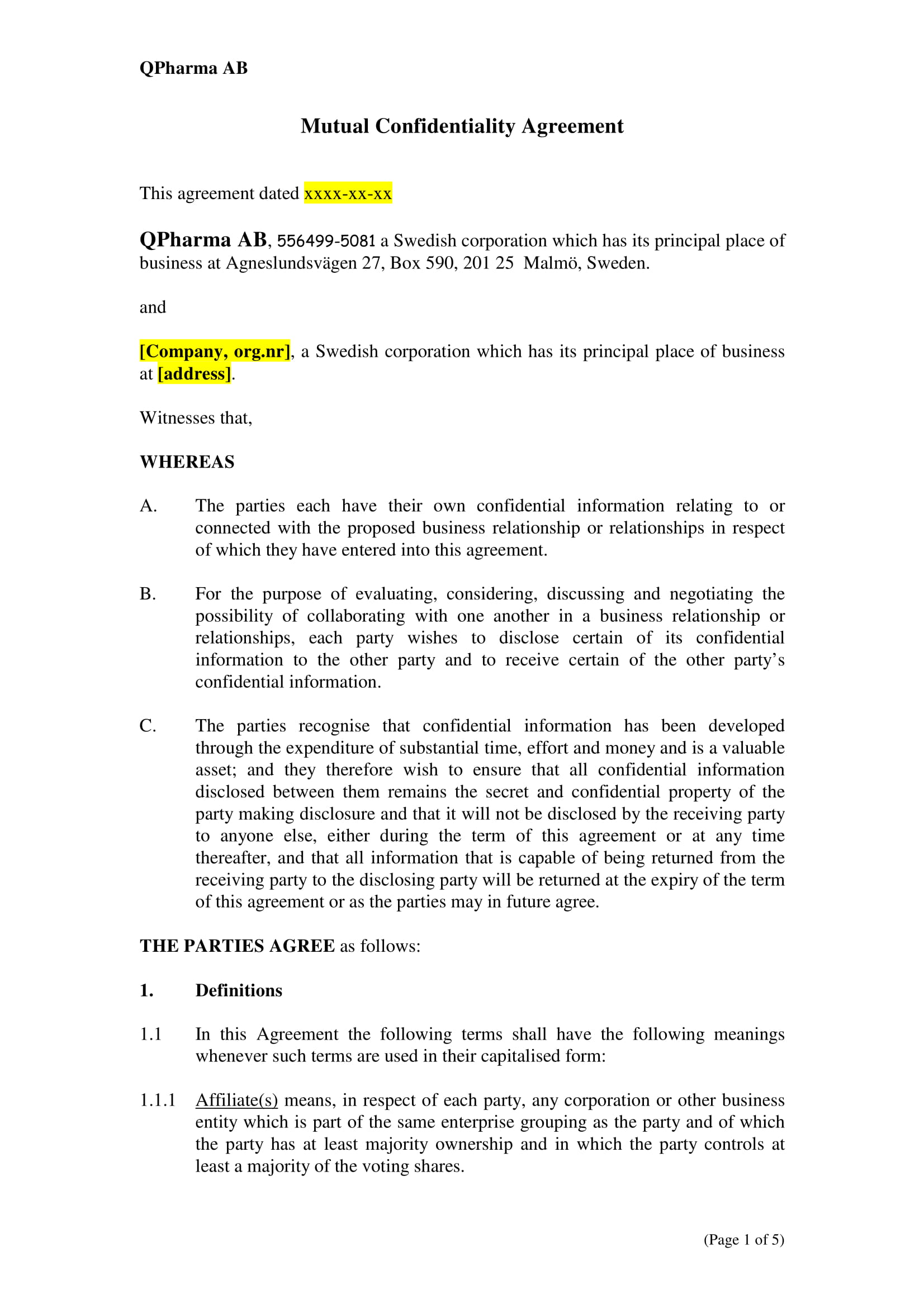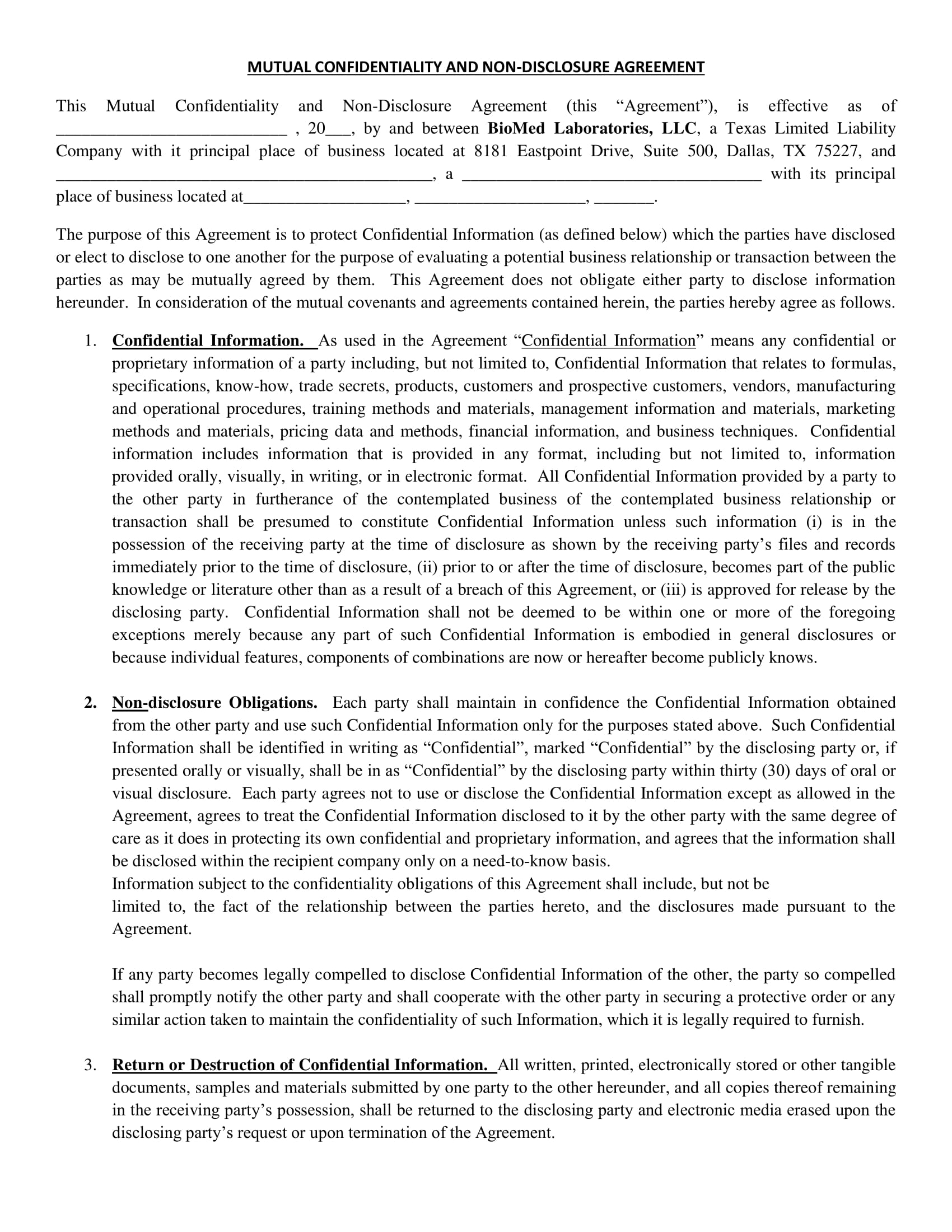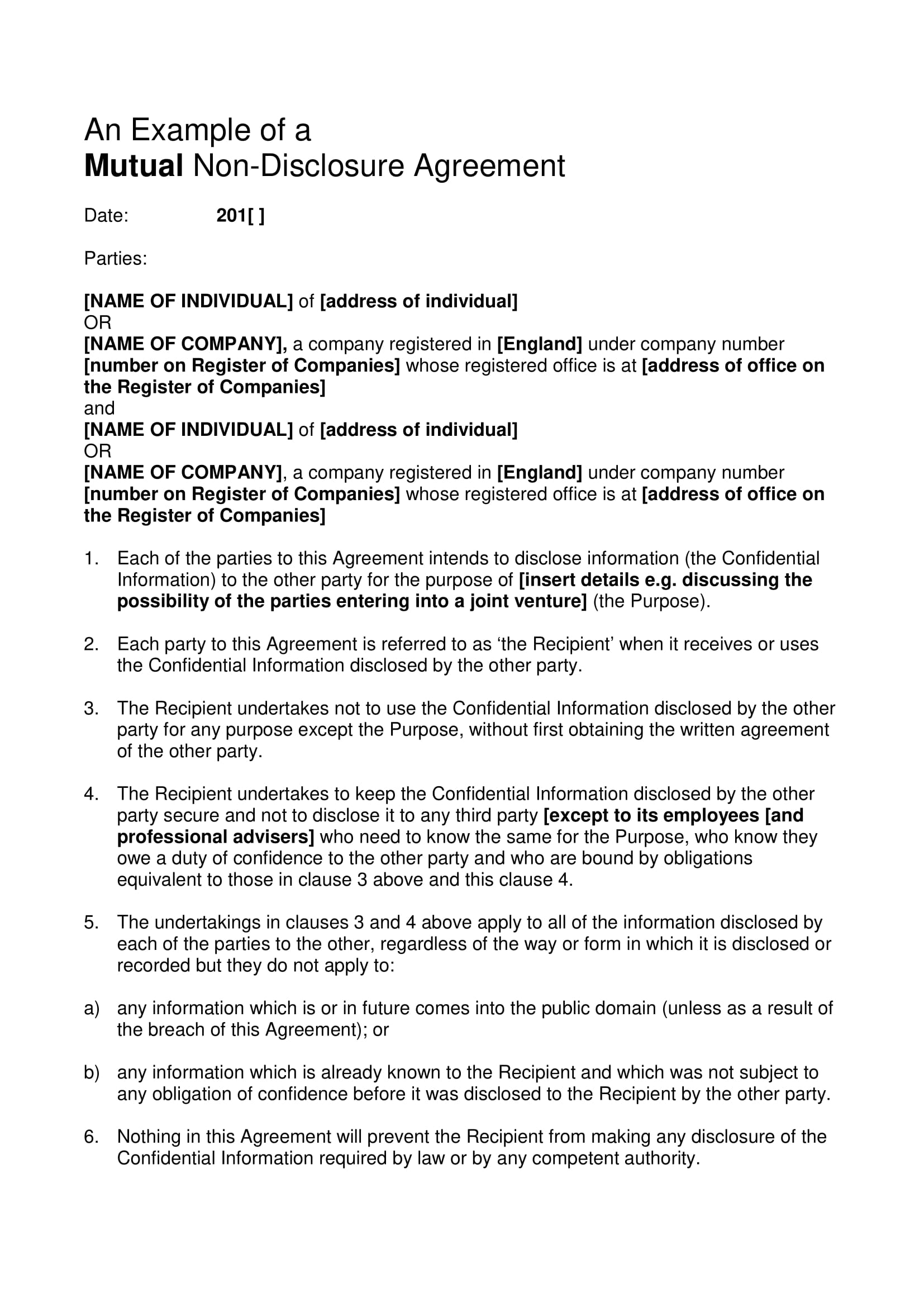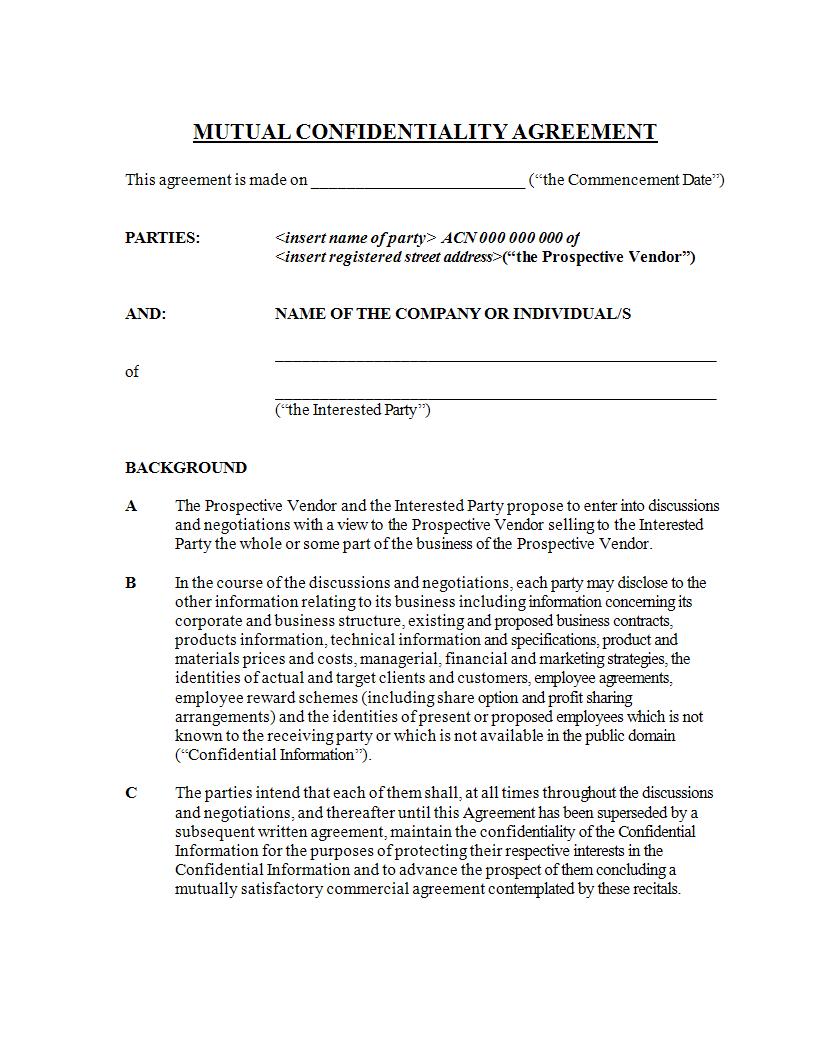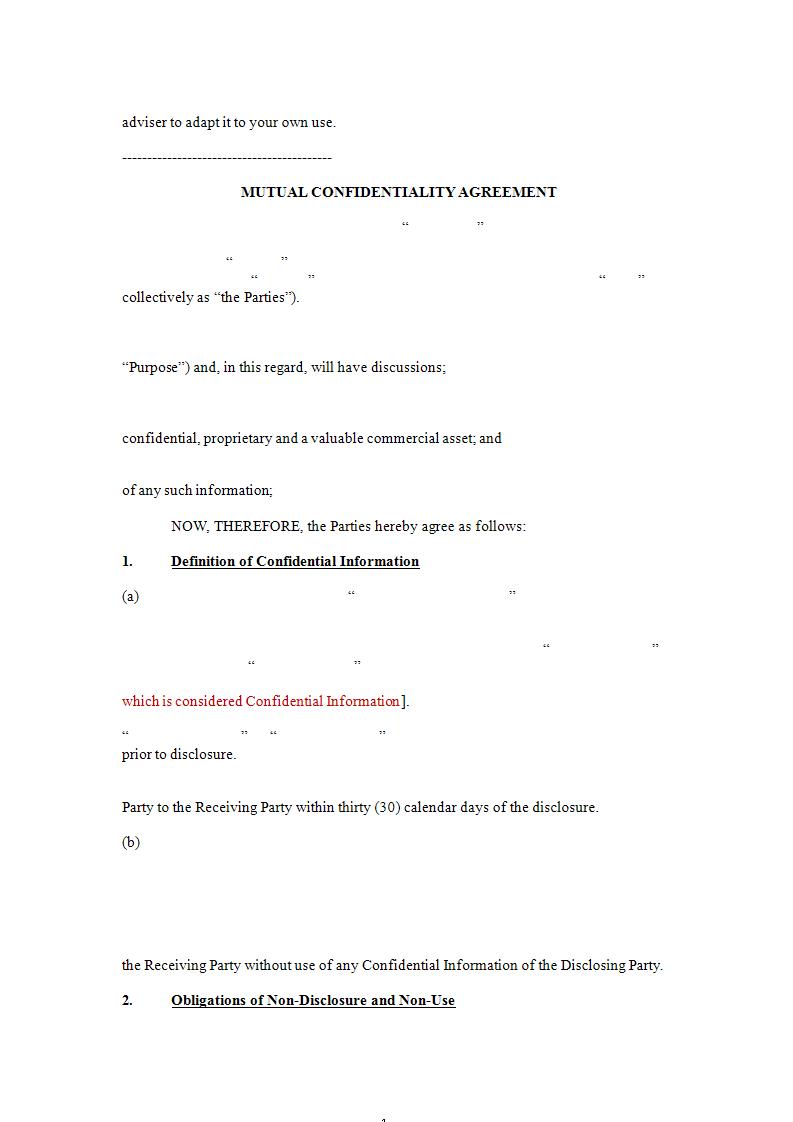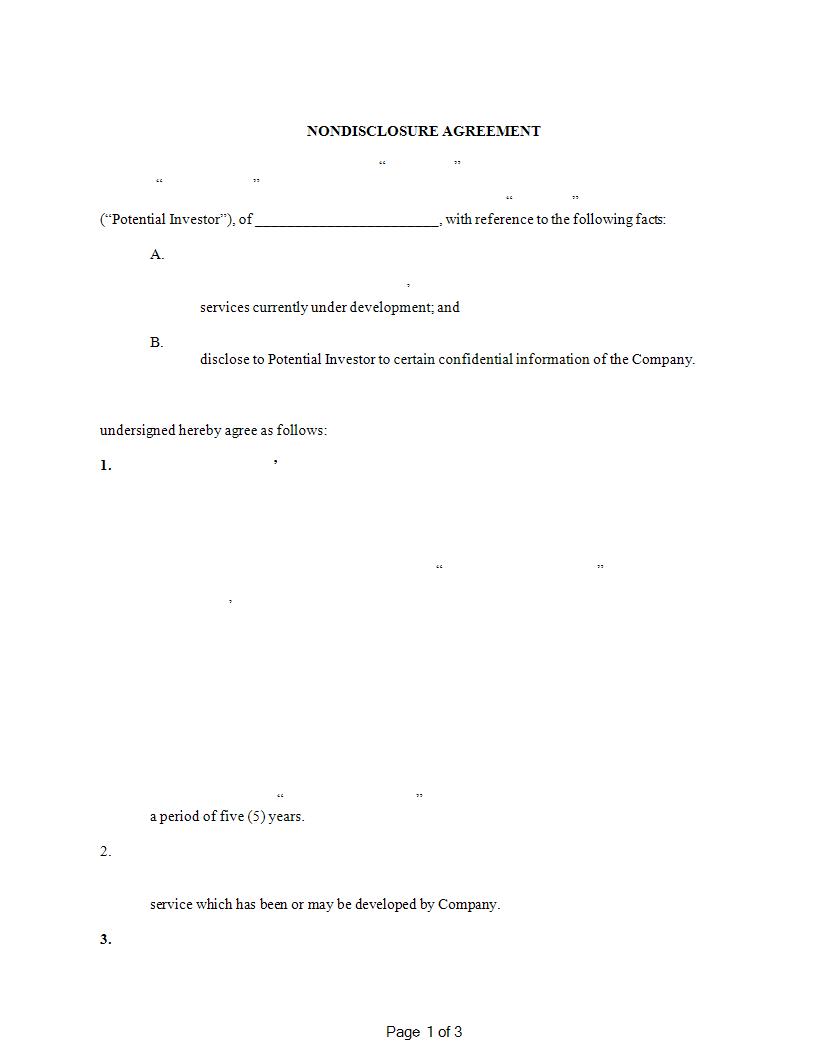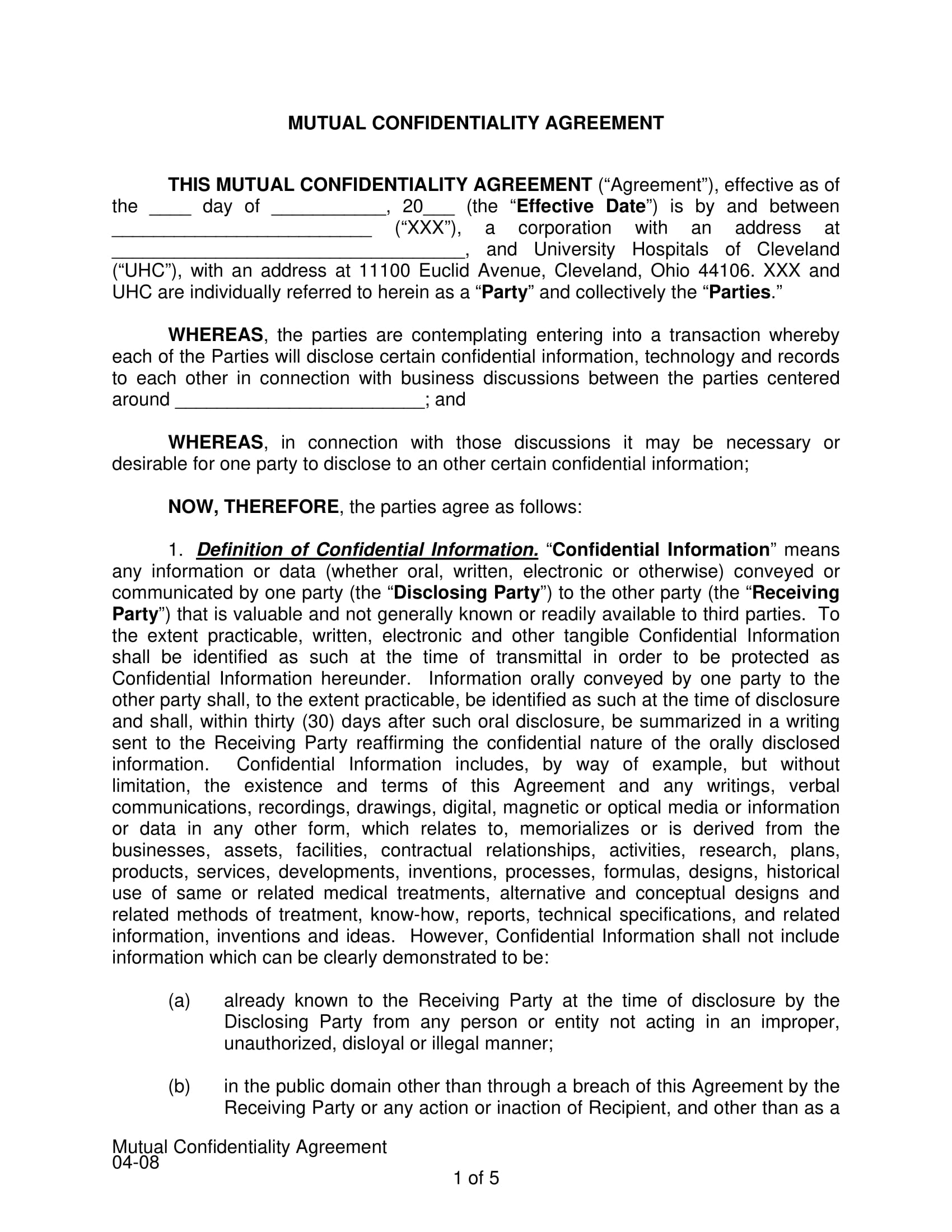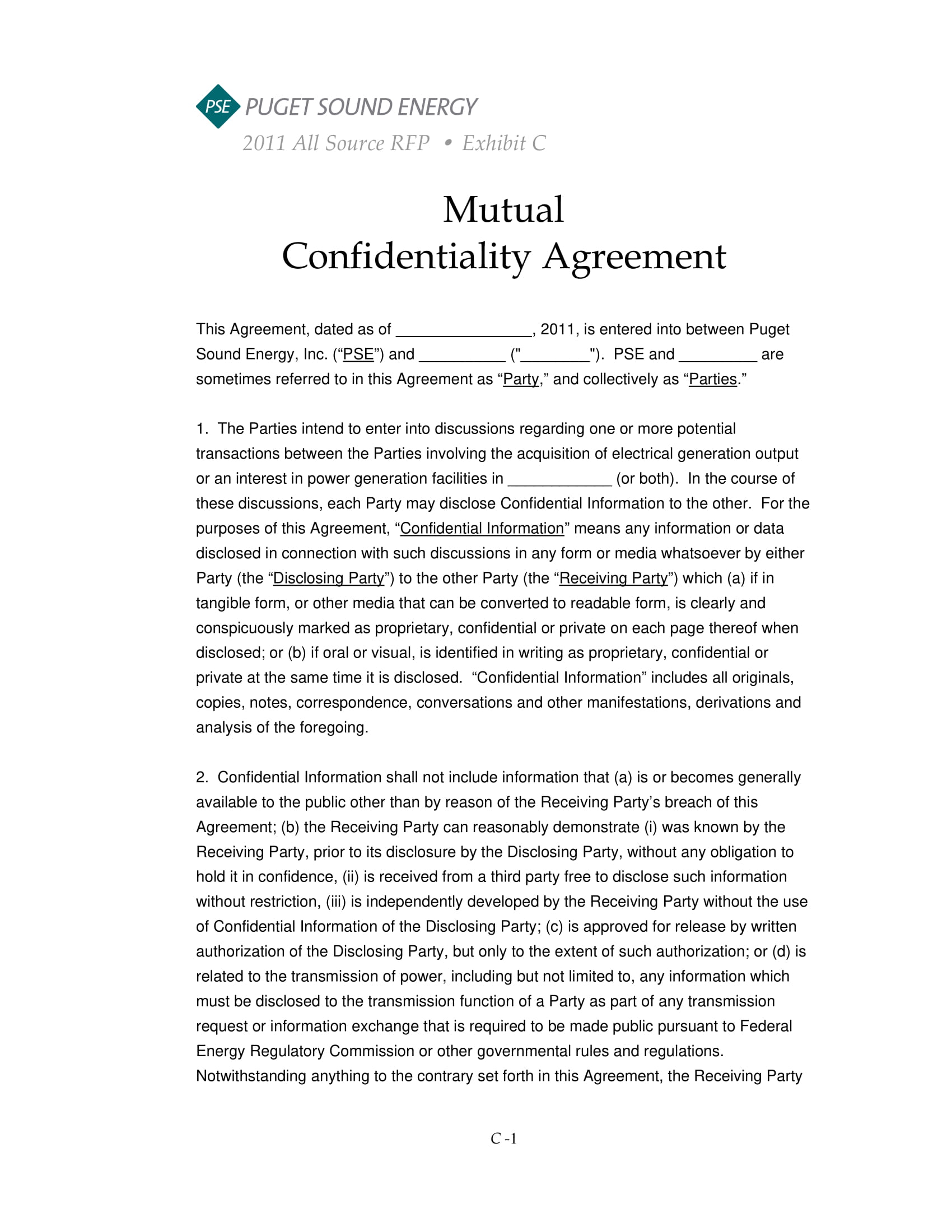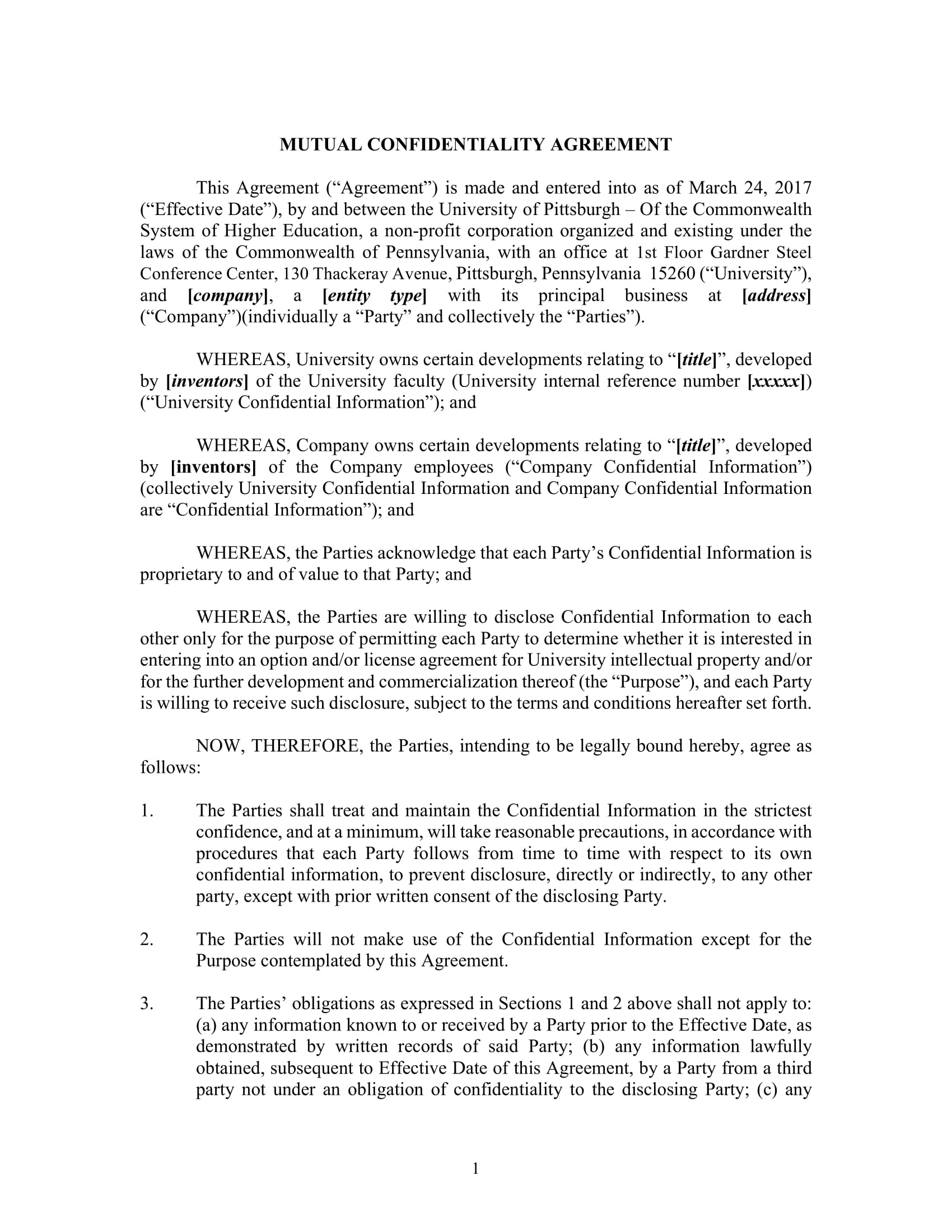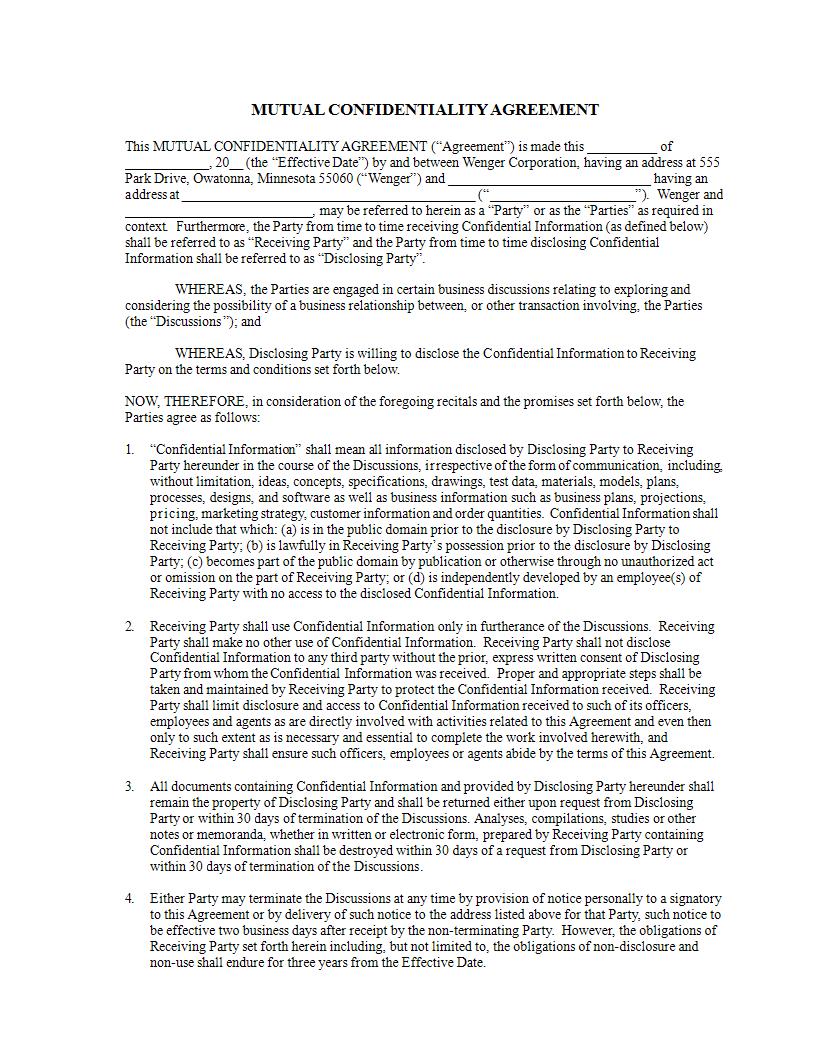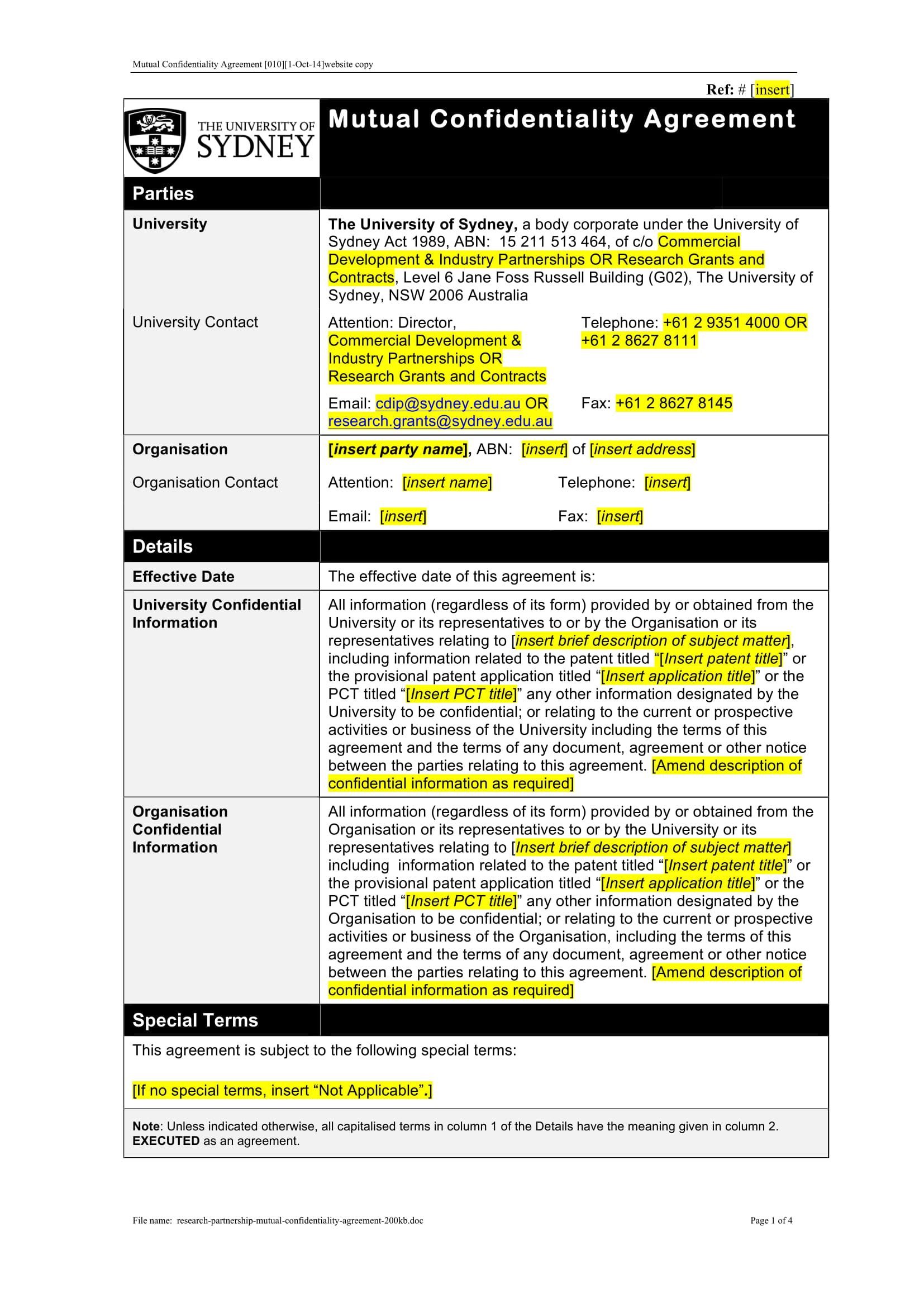15+ Mutual Confidentiality Agreement Examples to Download
There will be instances, especially in business or in any industry, that will need confidentiality. Some information shared between business partners are meant to be kept under wraps because of the top secret nature of such information. You may also see confidentiality agreement examples.
- 30+ Agreement Examples in Word
- 14+ Non-Compete Agreement Examples
However, this can also be applied to your personal life. And although there has been a verbal agreement for confidentiality, some people find it hard to oblige. Therefore, you need to take extra steps to make sure your confidentiality is kept and followed.
Mutual Confidentiality Agreement
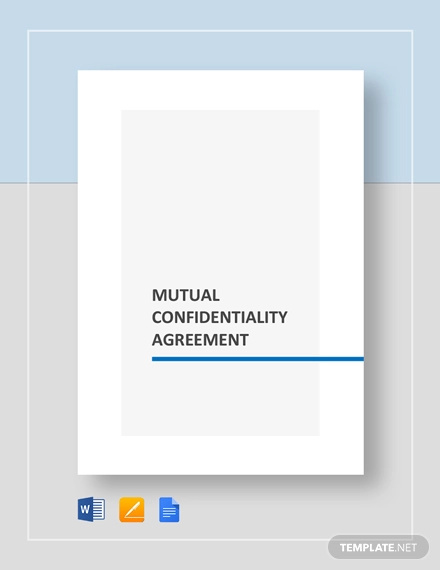
Restaurant Mutual Confidentiality Example Agreement
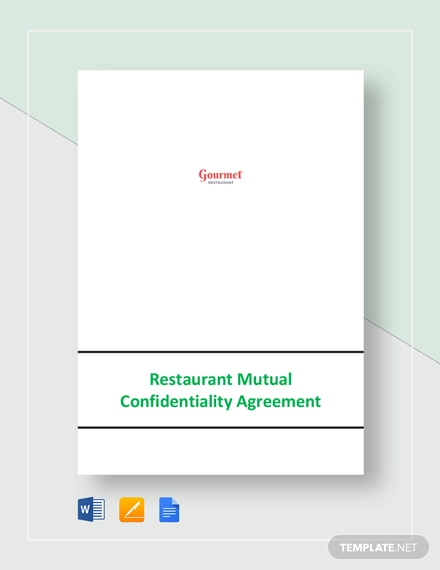
Simple Mutual Confidentiality Agreement Example
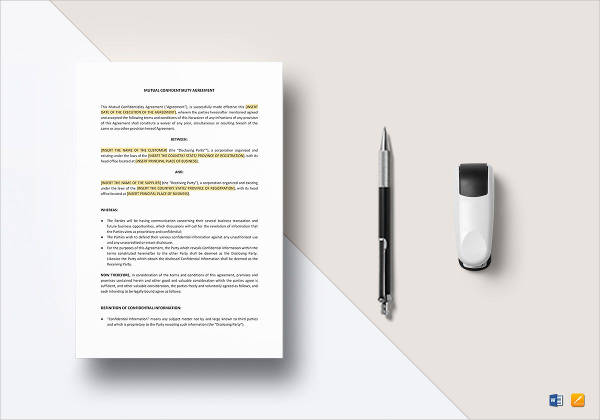
Restaurant Mutual Confidentiality Agreement Example
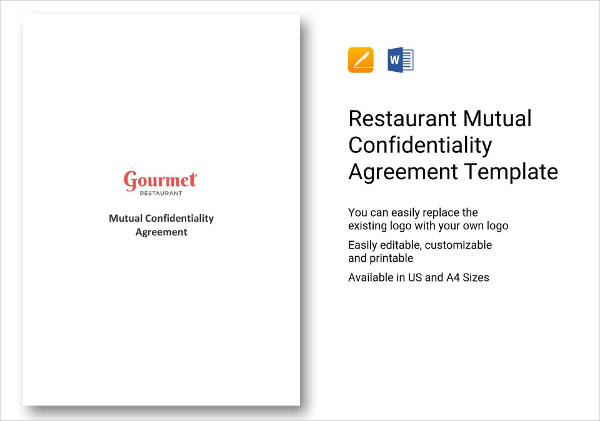
You cannot simply rely on the verbal agreement you have made with another person or organization. There is no guarantee that the said verbal confidentiality agreement will be strictly followed since verbal agreements can be easily denied and forgotten.
It also goes both ways; the other party also has no guarantee that you will keep and follow the said verbal agreement. That is why a written and well-documented mutual confidentiality agreement always comes in handy when dealing with sensitive and top secret information. You may also see employee confidentiality agreement examples.
Mutual Confidentiality Agreement Example
What Is a Mutual Confidentiality Agreement?
In order to make sure that your business and all the information relevant to it is protected at all costs, you need take certain measures. One of that is drafting and signing a mutual confidentiality agreement with the people you transact with in business. But what is a mutual confidentiality agreement? You may also see non-disclosure confidentiality agreement examples.
A mutual confidentiality agreement is a legal document and contract that requires both the parties involved sign in order to make sure there is no disclosure of any information under and protected by the agreement. It is also sometimes called as a mutual non-disclosure agreement.
Essentially, it creates a confidential relationship between all the parties involved and that they are bound to the information that they have shared and all the information listed on the simple agreement. It is most commonly used to keep information secret and confidential, these information can be about trade secrets, proprietary information, and so on.
It is an outline of all the confidential material, knowledge, or information that the involved parties wish to share with one another for whatever purpose, but wish to restrict any access to or by third parties.
The general agreement also details how the information can be disclosed and also prevents any information from being disclosed with the proper consent of both parties. In addition, the agreement will also state any potential consequences should one or both parties consciously or unconsciously leak the information under a specific clause in the document.
Therefore, a mutual confidential agreement is a commercial agreement entered into by all the parties involved in a certain transaction or activity that provides protection to the knowledge, information, or materials shared by both parties. This will serve as a guarantee or assurance that all of the things shared by both parties are not disclosed without consent and that whoever leaks such information or materials will be liable to face any agreed upon consequences.
Mutual Confidentiality and Non-Disclosure Agreement Example
Mutual Non-Disclosure Agreement Example
Mutual Confidentiality Agreement Template Example
Contents of a Mutual Confidentiality Agreement
In order to draft and make an effective mutual confidentiality agreement, you must first know what you should include in the basic agreement. You need to make sure that all the necessary and relevant details are included so that both parties can understand what they can’t discuss and what needs to be done. Here is a list of the common contents found in a mutual confidentiality agreement:
- Identification of the parties
- Definition of what is deemed to be confidential
- The disclosure period, e.g, information disclosed one year after the date of the agreement is not deemed confidential
- Exclusions on what must be kept as confidential
- Provisions or clauses restraining the transfer of information, knowledge, or material in violation of laws governing export control and national security, if necessary
- The time period of confidentiality
- Time period the agreement is binding
- A permission to obtain ex-parte injunctive relief
- A description of the actions need to be done with the confidential materials upon the end of the agreement
- A statement about the obligations of the parties involved with regards to the shared information
- A clear description of the types of permissible disclosure
- The law and jurisdiction governing all of the parties involved in the agreement
Standard Mutual Confidentiality Agreement Example
Potential Investor Non-Disclosure Agreement Example
When to Use a Mutual Confidentiality Agreement?
Since you want to protect all the information and data you have shared with another party during a business transaction, you need to know when is the appropriate time to sue a mutual confidentiality agreement. It is most commonly used when two or more parties decide to work together in some capacity. You may also see basic non-disclosure agreement examples.
Listed below are some of the circumstances when there is a high need for a mutual confidentiality agreement:
1. Business collaborations or mergers
There will be opportunities for you to collaborate with other companies for a new project or to merge some area of their business with yours.
A business collaboration is a powerful tool for all business owners in order to ensure that there is growth and a continued efficiency among everyday tasks as well as improving the outcomes of businesses. Regardless of the type of industry, working with other businesses can help your business grow and improve. You may also see patient confidentiality agreement examples.
However, it must be remembered that regardless of the shared business activities, some information, materials, and so on must still be kept under wraps to ensure competitors don’t get a hold of confidential information about the businesses; this is when a mutual confidentiality agreement is a need. You may also like non disclosure agreement examples & samples.
2. Start-up business needing investment
A mutual confidentiality agreement is also commonly used by start-up businesses seeking investment from third-party business entity or individuals. There is a need to disclose sensitive information such as relevant information about projects, products, materials, company financials, and so on in order for a start-up to secure investment from potential investors. You may also see partnership agreement examples.
Interested parties such as larger businesses or private investors also need to share information with the other party in order to reach and standard agreement. Therefore, a mutual confidential agreement ensures that all the information disclosed by both parties are protected and maintains confidentiality.
3. Starting a partnership
For parties that are still vetting for a partnership, a mutual confidentiality agreement must be drafted before any internal information is shared. In a partnership, one or both parties will have to share internal sensitive information in order to move forward with the partnership. Although there are instances when a unilateral NDA, where only one party is restricted to share such information, will be enough. You may also like professional services agreement examples.
However, in some cases when both parties needs to share confidential information, a mutual confidential agreement protects both parties more effectively.
Mutual Confidentiality Agreement Example
Fillable Mutual Confidentiality Agreement Example
Electric Power Mutual Confidentiality Agreement Example
Consequences of Not Having a Mutual Confidentiality Agreement
As mentioned, a mutual confidentiality agreement is an important legal document that helps protect the right of all the parties involved in a business transaction from having sensitive and confidential agreement form being disclosed without consent.
Here are some of the most common negative consequences of not having a mutual confidentiality agreement:
1. Breeds mistrust
When businesses decide to join force in some sort of a merger or joint project, a mutual confidentiality agreement protects both parties.
When one party offers a unilateral NDA, even if only one of the parties involved sensitive information, might be interpreted as a red flag for caution. A mutual confidentiality agreement will signal that both parties are on even playing grounds. The formal agreement will ensure that both parties are agreeing on the same terms and are protected by the same parameters.
2. Theft of ideas
This is the most feared circumstances by any company but especially by a start-up, and this can easily happen if a company decides to not use a mutual confidentiality agreement.
The edge of startups is the fresh ideas they have regarding certain projects. If a startup discusses details regarding a project with larger businesses without proper protection, there is no stopping the larger business entity from bringing a similar product to the market in a faster and with more ease way through their abundant resources than that of the smaller startup. You may also see purchase agreement examples.
3. Negative publicity
Some businesses keep sensitive information because it can damage the reputation of the company. If a company enters into a business transaction with another company offering closely similar products or services or from a different industry without a proper outline of what can and cannot be publicly shared, the company may have to face and go through negative publicity that will greatly affect their sales and overall production. You may also like management agreement examples.
University Mutual Confidentiality Agreement Example
Business Mutual Confidentiality Agreement Example
Partnership Mutual Confidentiality Agreement Example
Conclusion
With the term “mutual” connected to mutual confidentiality agreement, it means that both parties involved should enter and sign the said agreement. It means that both parties cannot disclose certain information, knowledge, and materials that has been included in the agreement. You may also see dissolution agreement examples.
At the same time, it also helps protect both companies from negative consequences such as theft of ideas and negative publicity; it also ensures that all the information shared by both parties are kept only between the parties involved and restricts its disclosure to third-party entities or the public. We hope that this guide has helped you understand what a mutual confidentiality agreement is. You may also like promotion agreement examples.



